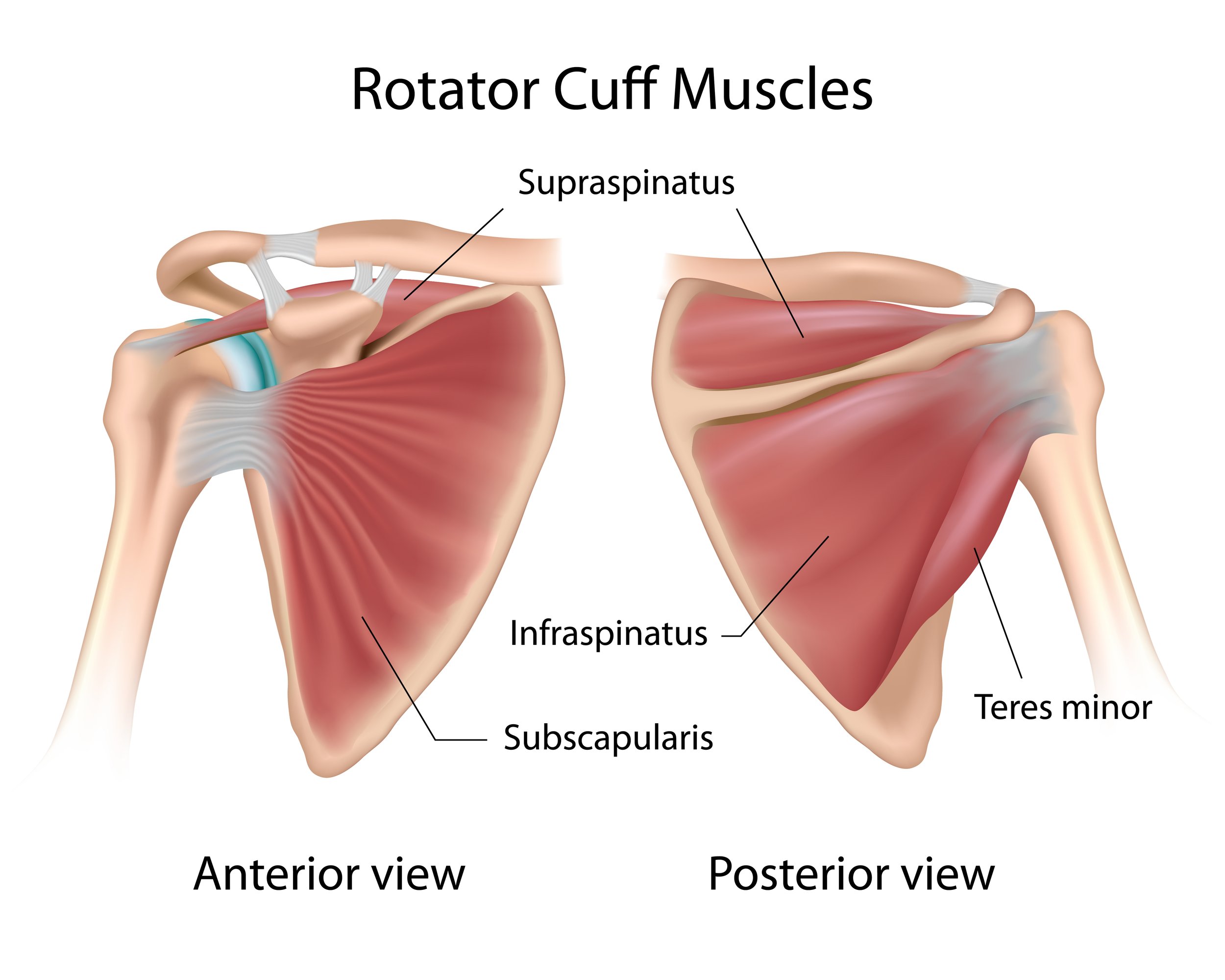All You Need to Know About the Rotator Cuff
The elusive rotator cuff. Most people have heard of it and some have even injured it.
So what are the rotator cuff muscles? How do they function? And why is a weak or injured rotator cuff so problematic for the shoulder?
Let’s dive into this hugely importance group of muscles.
The Muscles
There are 4 muscles that make up the rotator cuff.
Supraspinatus
Infraspinatus
Teres Minor
Subscapularis
As an acronym they create S.I.T.S
Function
The primary focus of the rotator cuff is to stabilize and rotate the shoulder. More specifically:
The supraspinatus abducts the arm. This means when your arm is resting by your side, the supraspinatus is primarily responsible for lifting that arm directly out to the side.
The infraspinatus and teres minor are responsible for external rotation. If you were to lift your arms out to the side and rotate your arm so your thumbs are pointing up, that is the movement of external rotation.
The subscapularis is responsible for internal rotation. Ever scratch your back? The motion of rotating your arm into that position is the movement of internal rotation.
Outside of their individual functions, the rotator cuff works together to form compression at the glenohumeral joint (the ball and socket). This stabilizes the joint and prevents joint laxity and improved movement patterns for the surrounding muscles.
The glenohumeral joint is inherently an unstable, shallow joint. There is only 1 bone that connects the entire arm to the body. That bone is the clavicle (collarbone). This means the muscular control along with ligamentous support is monumental for stability and adequate motion as well as eliminating pain.
Tendinopathy vs. Tear
If the rotator cuff is not adequately strengthened it can lead to a tendinopathy or more seriously, a tear. As the rotator cuff has 4 muscles, it is important to distinguish which muscle(s) are involved as they all have specific actions. Your physical therapist will be able to determine which muscles are involved during your assessment.
Once we know which muscle(s) are involved, how can we distinguish the difference between a tendinopathy vs. a tear?
Tendinopathy
There are a few ways to grade rotator cuff tendinopathy, all which require imaging techniques, like MRI or ultarsound. In a typical clinical setting, it is not necessary to get specific tests to understand the grade of the tendinopathy unless progress is not being made.
The Ellman classification system is one way to visualize the tendon and predict the outcome of non-surgical management.
[Ellman classification: This classification system is based on the thickness and quality of the rotator cuff tendon on ultrasound imaging. There are four grades ranging from 1 (normal thickness and quality) to 4 (complete tear of the tendon). This grading system can help guide treatment decisions and predict the outcome of non-surgical management.]
Symptoms typically include: pain, loss of motion, weakness, and/or clicking or popping. The increased the severity of tendinopathy, the worse the symptoms.
Tear
There are generally two ways that rotator cuff tears can be graded: by the size of the tear and by the severity of the tear.
By size, rotator cuff tears are usually classified into the following categories:
Small tear: Less than 1 cm in size
Medium tear: Between 1 and 3 cm in size
Large tear: Between 3 and 5 cm in size
Massive tear: Greater than 5 cm in size
By severity, rotator cuff tears are usually classified into the following categories:
Grade 1 tear: A small tear in the rotator cuff, usually less than 1 cm in size, that does not involve a significant loss of function or strength. Surgery is almost never required.
Grade 2 tear: A larger tear in the rotator cuff, usually between 1 and 3 cm in size, that may cause some loss of function and strength. Surgery is sometimes necessary depending on other factors including age, strength, joint health etc.
Grade 3 tear: A complete tear in the rotator cuff, which causes significant loss of function and strength. Surgery almost always necessary.
Grade 4 tear: A complete tear in the rotator cuff that cannot be repaired surgically. This can be due to age related factors, loss of tendon pliability, anatomical variations, etc.
The grading of a rotator cuff tear is typically determined by a healthcare provider using imaging studies such as MRI or ultrasound. The treatment for a rotator cuff tear will depend on the size and severity of the tear, as well as the individual's overall health and activity level.
How Can I Determine if my Rotator Cuff is Injured?
A quick and simple way to determine if your rotator cuff is involved vs. other shoulder structures is this:
Lift your arm - is it painful? If yes, try #2
Help lift your arm with your other hand - is it still painful? If no (or if the pain is significantly less) - it’s likely a rotator cuff injury. If yes, there might be something else going on.
Now this is a very simplified approach to determining rotator cuff injury, however, generally speaking it’s pretty accurate.
What Next?
If you'd rather have someone trained in musculoskeletal assessment look at your shoulder, book a FREE consultation with us! We love the shoulder and being creative with the rehab process. Why wait?

